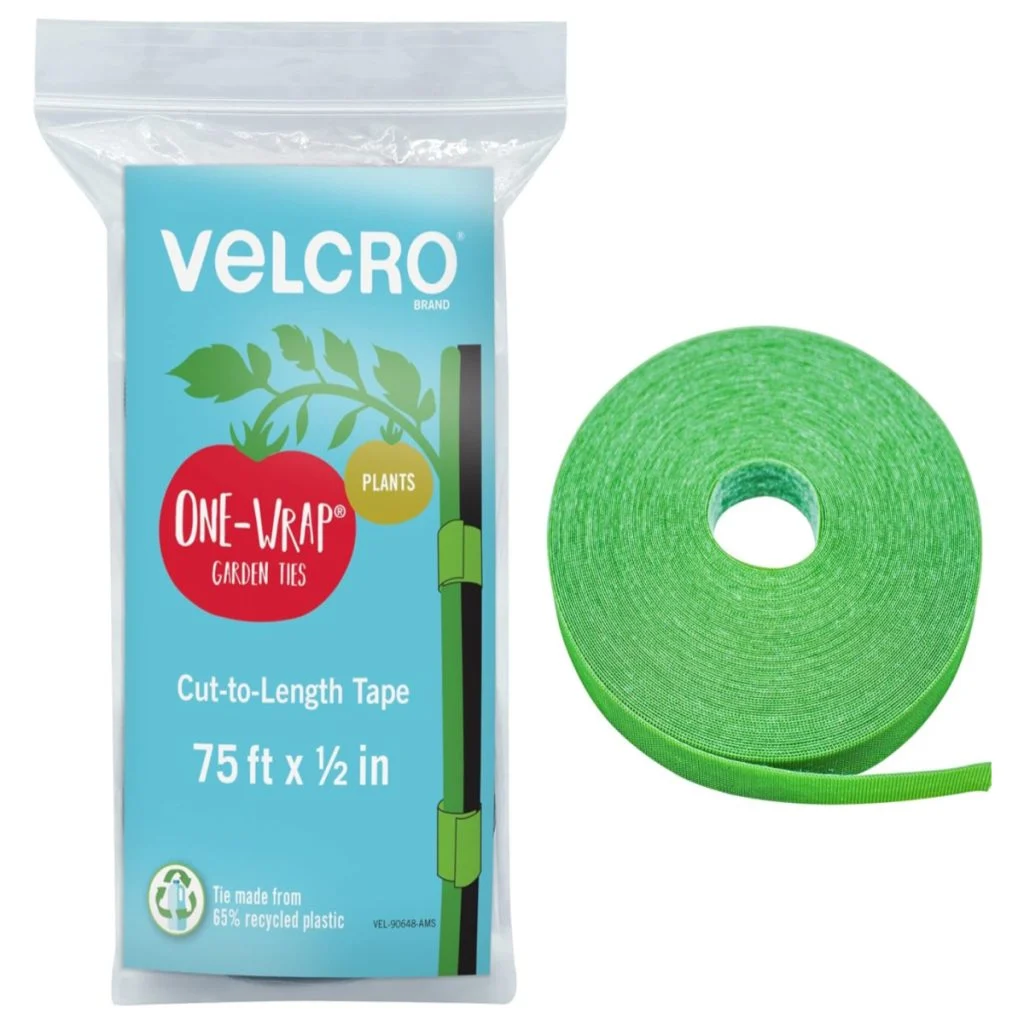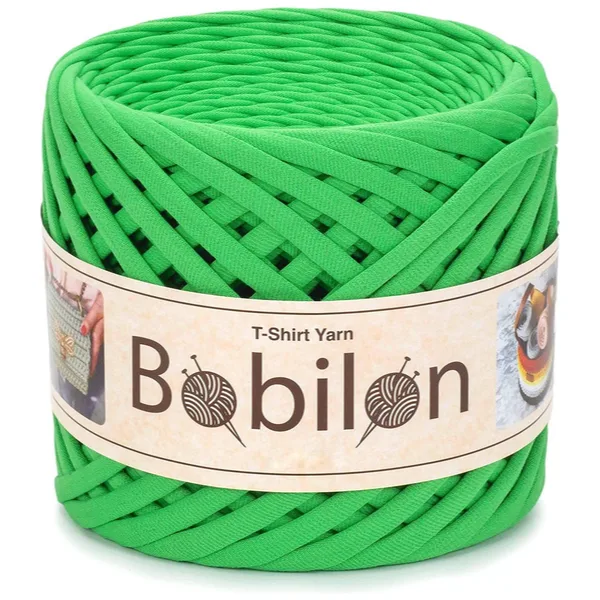Wondering the best way to tie up all of those branches and stems growing wildly from your tomato plants?
As summer begins to hit full stride, tomato plants usually begin to as well. What were once small, floundering transplants suddenly are now fast growing plants that quickly need help. One thing is for sure, when it comes to growing great tomatoes, how, when and what you use to support your plants as they grow can play a major role in their overall performance.
Not just in helping to keep the plant from toppling over when full of fruit, but also to keep them productive and free of pests and disease!
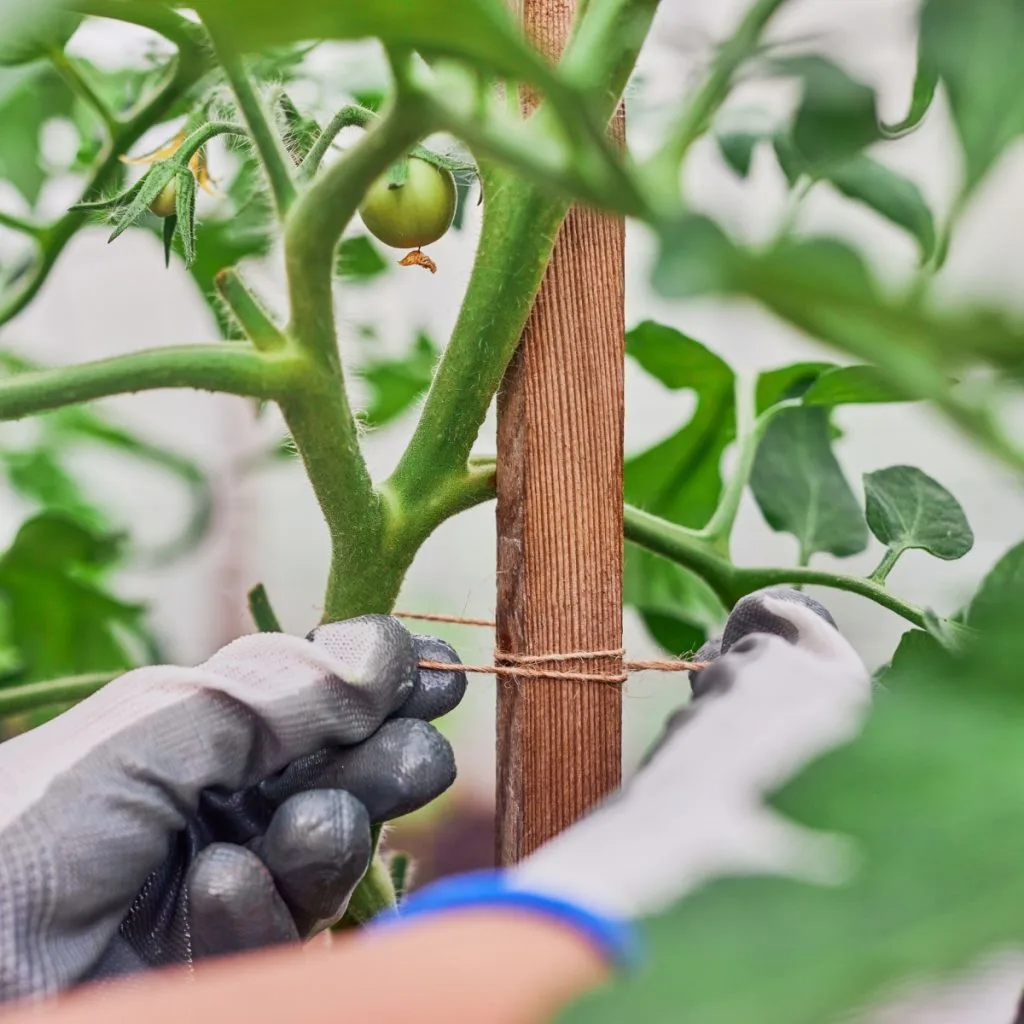
The Best Way To Tie Up Tomato Plants
The Benefits Of Giving Your Plants Good Support
As it turns out, there is actually a long list of benefits to tying up your plants. First and foremost, supporting your tomato crop is vital in keeping branches from snapping under the weight of ripening fruit. Believe it or not, a heavy fruit load can add as much as 25 to 30 pounds per plant.
Unfortunately, without support, that weight can topple plants quite easily as they begin to produce. Especially if a strong summer storm happens to blow through when fully loaded. One thing is for sure, it can ruin a harvest in a flash!
But more than just supporting your tomato plants, tying up branches as they grow also allows for better air flow and light. Good air flow is extremely important in keeping plants healthy and allowing for better pollination. And the more light a plant gets, the better chance it has to ripen its fruit.
Tying up your plants also makes daily chores of watering, weeding and harvesting more manageable as well. But perhaps most important of all, keeping fruit and the branches off of the ground can protect your harvest from the perils of pests and disease.
When branches are allowed to sprawl to the ground, it makes it easy for soil borne diseases to hitch a ride. And, of course, it also allows insects and pests to climb and hide out without trouble as well.
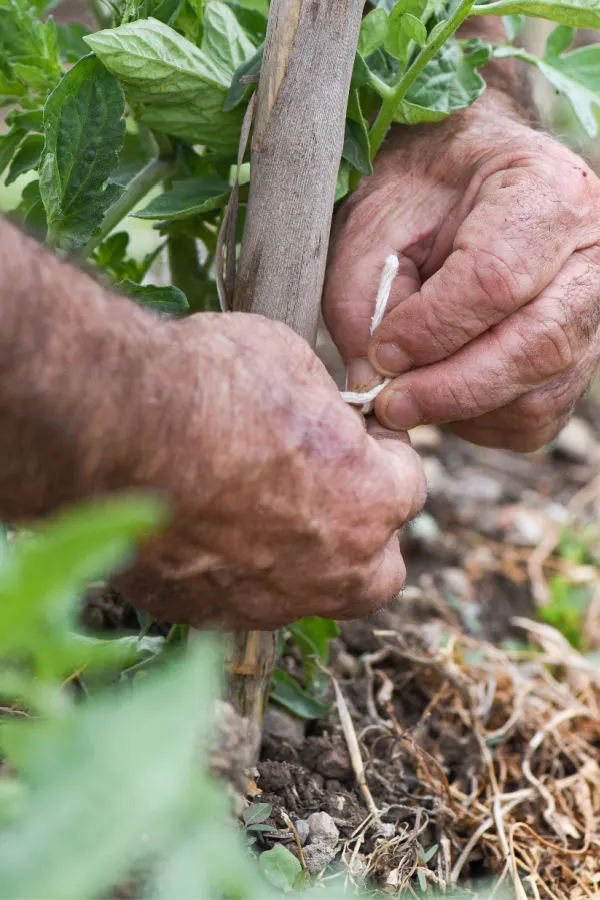
How & When To Tie Up Tomato Plants
When it comes to tying up tomatoes, success begins with supporting the main stem – and it needs to be done as soon as possible! In fact, the best time to put your tomato supports in the ground is the day you plant.
No matter if you use a stake, cage, trellis or any other type of support system, putting them in place before or as you plant will help protect your plants in two key ways.
First, it allows to tie off your main stem from day 1. The main stem, especially early in a plant’s life cycle, is it’s lifeline. The more it moves and ways, the more chances there are for it to be damaged. Providing early stability for the main stem of your plant is critical to anchoring all of the other branches, stems and future growth.
Secondly, and just as important as tying off your main stem, putting your supports in early also keeps you from damaging roots and compacting the ground if you have to drive them in after the plant has been growing. Both of which can severely stunt your plant’s growth!
Supporting The Main Stem
We will cover some of the best materials to use in a moment (along with a few not to use!), but let’s start with how to support your tomato plants as they grow by tying them up at the right time and in the right places.
Listen In Below To Our Podcast On Supporting Tomatoes!
Begin at the base of plant, tying off the main stem a few inches off the ground. Allow a bit of room for the base to grow when tying, as it will thicken as summer progresses. If your plants are tall enough, add a second tie off point six to eight inches above ground level for the main stem.
These two tie-offs will provide the main support for the plant as it grows. As you do this, always be sure to trim off any branches below this point.
How To Tie Up Tomato Plants As They Grow
For the branches above, it is all about keeping the plant under control. Begin by tying the longest branches back to the center post. If you are using a stake, you can weave branches to support each other as you tie them back.
For cages, try to tie branches equally around the supports. Tying these off-shoots back to the main branch area provides much needed support as they begin to bear fruit. Once the plant has four to five main tie off spots in the middle and top, it should have all the support it needs.
As the season progresses, only tie back additional branches when they begin to wane from too much fruit. Quite often, pruning wild branches is the better option than tying up for wild or excessively large branches.
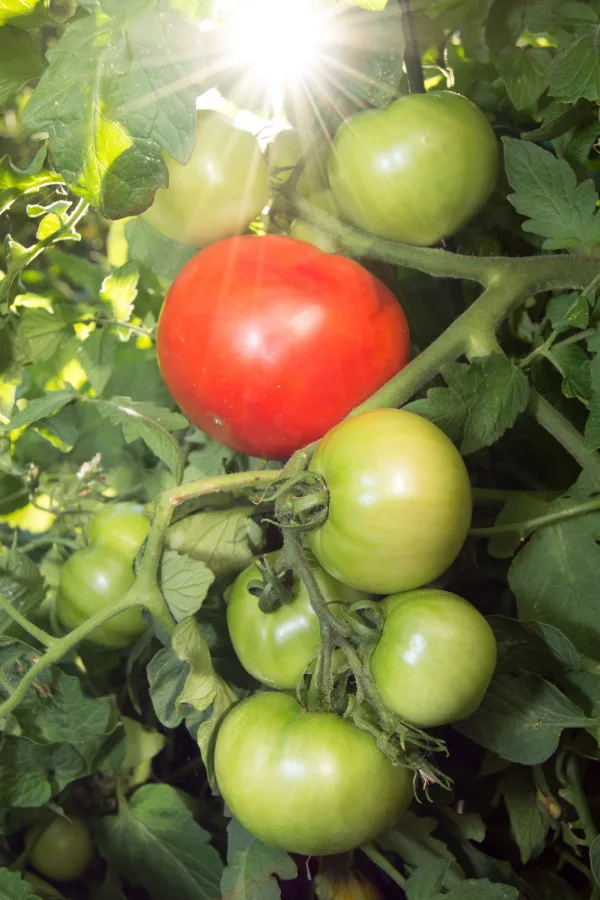
Cutting these back will allow more energy to go to producing and ripening more fruit. If there is one mistake gardeners often make with their plants, it is trying to keep up and tie all of the branches that grow. In this case, less is more! See: Why You Need To Prune Tomato Plants Early – And How To Do It With Ease!
The Best Materials To Use
Selecting the wrong material to tie up your tomatoes can cause serious damage to your plants. Materials that are too rigid will easily cut and damage the plants as they grow. They can also slice and rub tender shoots off in windy conditions.
Stay clear of zip ties, metal wire, and hard plastic ties. Heavy rope can also create issues as well. So what can you use? The key is to select materials strong enough to hold plants, but with flexibility. With that in mind, here is a look at some of the best materials to use:
Velcro Tomato Supports
When it comes to specific products that are made for tying off tomato plants and other vegetables safely and with ease, velcro wraps are one of the best. Not only are they reusable, but they go on with one of the easiest methods ever, velcro!
Simply cut off the desired length from the roll, and then wrap around the stem. The material is weather resistant, and can be re-adjusted and re-used as needed. Affiliate Link: VELCRO Brand ONE-WRAP Garden Ties | Plant Supports
Cotton Yarn
One of the most economical choices around for tying up plants is a thick, all-cotton yarn. Cotton yarn is both strong and flexible. It allows plants to move freely, and more importantly, expands when a stem grows thick against it.
Since it can be purchased in long rolls and cut to size, it is also one of the least expensive ways to tie up tomatoes, peppers, or nearly any plant that needs support. And you can even select it in a natural green color to blend right in with your plants.
One of our favorites of all is cotton t-shirt yarn. It is thicker and easy to work with, and you can usually purchase a 100+ yard roll for under $15. Talk about a lot of tying for a little! Product Link: T-Shirt Yarn Fettuccini Spaghetti Style, 7-9 mm
Jute String / Tomato Twine / Pantyhose / Cotton
Tomato twine or jute string are old-time favorites used by many gardeners to tie up tomato plants. Both are economical, although jute can sometimes be an issue rubbing into plants.
Of course, we can’t forget to mention the old standby of tying up tomatoes – pantyhose! They do work extremely well in supporting plants, and their flexible nature is easy on plants. But they can be hard to find these days, and are certainly quite expensive if purchased new.
Old cotton t-shirts cut into strips are an excellent economical way to tie up your plants. Cut the t-shirts into one inch thick strips and then tie loosely around your plants to allow them room to grow.
Here is to giving your tomato plants the support they need this year – and to a banner crop of tomatoes!
This Is My Garden
Follow Our Facebook Page For Great Gardening Tips And Advice! This Is My Garden Facebook Page
This Is My Garden is a garden website created by gardeners, for gardeners. Jim and Mary Competti have been writing gardening, DIY and recipe articles and books and speaking for over 15 years from their 46 acre Ohio farm. They publish three articles every week, 52 weeks a year. Sign up today to follow via email, or follow along!

